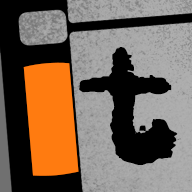I'm trying to shoot a short, and I'm running into issues with too much natural light. I want to shoot with a really shallow depth of field for most of the shots (this is vital and not something I want to compromise on), which means a wide open aperture (the lenses I'm using go down to f2 and f2.8, and those are the fastest lenses I own, and I'm shooting on a GH1, so the crop factor is 2X). The problem I'm running into is that at that aperture, I'm getting way too much light with my shutter speed set at 60.
I'm going to try shooting around twilight tonight to see if I can manage to get the right amount of light coming in, but barring that, I'm going to need to do something about the amount of light.
I know the logical choice would be to buy an ND filter. And it's on my wishlist, but at the moment, I honestly can't afford one (let me rephrase: I could get one of the cheap $20 Rocketfish ones, but I've heard so many awful things about them I'm thinking I might be better off with all my highlights blown out). And I really don't want to put off filming this short just because I lack one (minor) piece of equipment.
My only alternative is to up the shutter speed. According to my histogram, I'm hitting the sweet spot right around 300-400. It's obviously way faster than I want, but it might be my only option unless I want to put off filming for another few weeks (which I really don't want to do).
So here's my big question: could I add more motion blur in post to make the faster shutter speed of the outdoor shots look more like the indoor shots? I've got access to both After Effects and Premiere Pro.
Is there something else I could do to compensate for all this light? I'm really hoping twilight will work, so I'm keeping my fingers crossed, but just in case it doesn't, I'd like to have a backup plan.
I'm going to try shooting around twilight tonight to see if I can manage to get the right amount of light coming in, but barring that, I'm going to need to do something about the amount of light.
I know the logical choice would be to buy an ND filter. And it's on my wishlist, but at the moment, I honestly can't afford one (let me rephrase: I could get one of the cheap $20 Rocketfish ones, but I've heard so many awful things about them I'm thinking I might be better off with all my highlights blown out). And I really don't want to put off filming this short just because I lack one (minor) piece of equipment.
My only alternative is to up the shutter speed. According to my histogram, I'm hitting the sweet spot right around 300-400. It's obviously way faster than I want, but it might be my only option unless I want to put off filming for another few weeks (which I really don't want to do).
So here's my big question: could I add more motion blur in post to make the faster shutter speed of the outdoor shots look more like the indoor shots? I've got access to both After Effects and Premiere Pro.
Is there something else I could do to compensate for all this light? I'm really hoping twilight will work, so I'm keeping my fingers crossed, but just in case it doesn't, I'd like to have a backup plan.



 ). I'll let everyone know how it goes!
). I'll let everyone know how it goes!
